City Regulatory Hurdles Favor Big Developers, Not the Little Guy
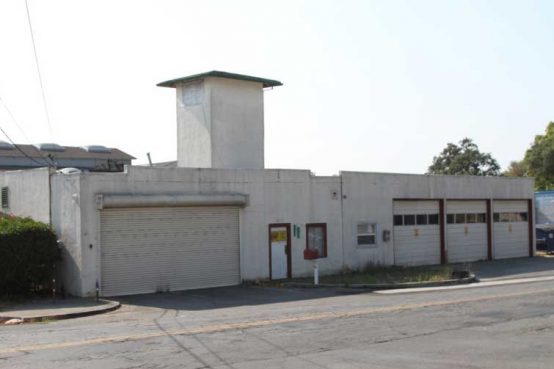
When it comes to land use policy, we have a collection of rules, regulations, social expectations, and a cost structure that reinforces and mandates a very specific set of arrangements.
Here’s one example of how these things shape our lives. A family in a town I visited bought an old fire station a few years ago with the intention of turning it into a Portuguese bakery and brewpub. They thought they’d have to retrofit the interior of the building to meet health and safety standards for such an establishment. Turns out the cost of bringing the landscape around the outside of the building up to code was their primary impediment.
Mandatory parking requirements, sidewalks, curb cuts, fire lanes, on-site stormwater management, handicapped accessibility, drought-tolerant native plantings…it’s a very long list that totaled $340,000 worth of work. They only paid $245,000 for the entire property. And that’s before they even started bringing the building itself up to code for their intended use. Guess what? They decided not to open the bakery or brewery. Big surprise.
I’ve heard many officials and professionals get very derisive in their assessment of such efforts: “Oh, they were idiots. They didn’t do their homework before they started their project. What? They thought they could just do whatever they want with the place? There are rules you know.” These are precisely the same individuals who butter their bread each day with impact fees and billable hours. They have no skin in the game.

Meanwhile, the space has been pressed in to service as a printing shop for the family’s specialty advertising business. It’s a productive and profitable use of the existing space that doesn’t require structural changes or special regulatory approval. But it’s significantly lower down on the economic food chain, creates less taxable revenue, employs far fewer people, and does nothing to activate the town’s social or cultural life. And if anything were to happen to the building it wouldn’t be cost effective to rebuild so the lot would most likely remain vacant. There are plenty of empty parcels all around that attest to this reality.
Here’s an example of the kinds of things that are now required in order to open a new business. Each element of the design is based on an accumulation of amendments to the code over many decades. Individually it’s impossible to argue against each of the particulars. Do you really want to deprive people in wheelchairs of the basic civil right of public accommodation? Do you really want the place to catch fire and burn? Do you want a barren landscape that’s bereft of vegetation?
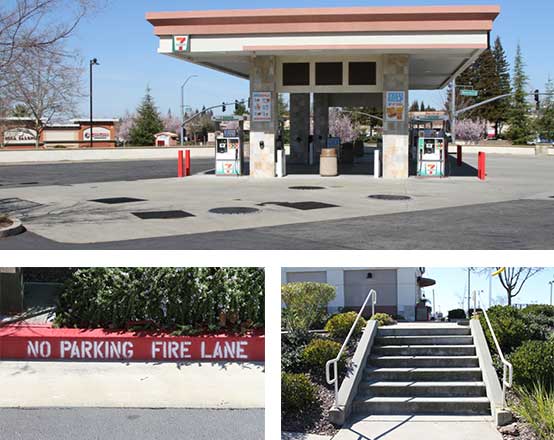
Consider the example of the gas station and an automated car wash pictured above.
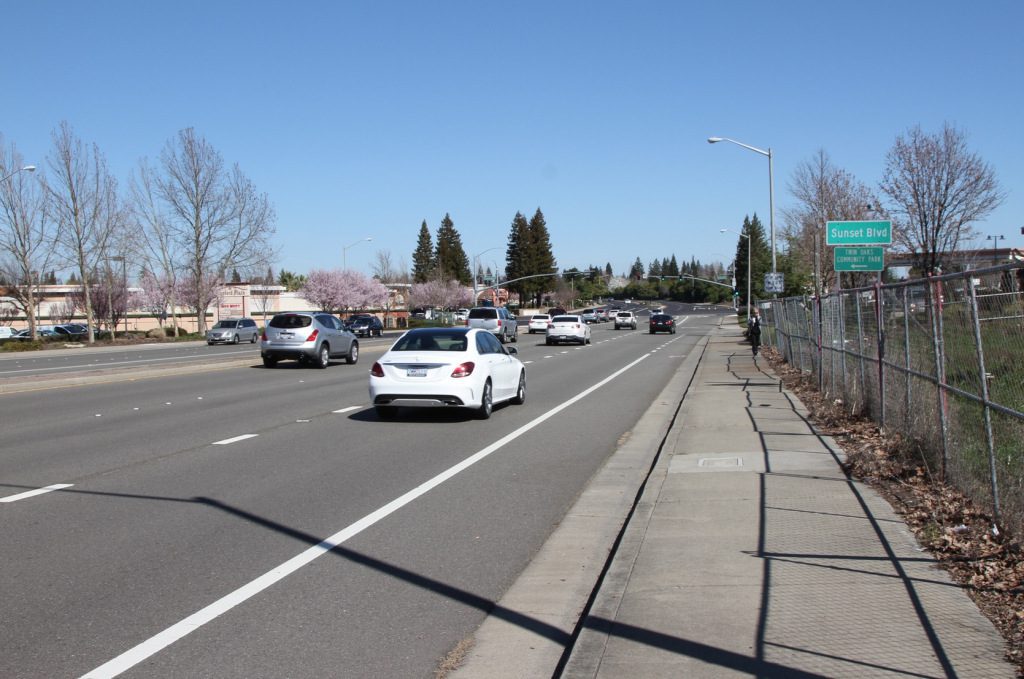
And here’s the larger context. Can you spot the human? Look closely. She’s there. All our collective legislation to make individual establishments achieve specific goals are in direct conflict with the larger development pattern, which is also institutionally mandated. There is zero chance that any of these laws and procedures will be changed in my lifetime. However, it’s highly likely that before I die this gas station will close and the property will work its way down to a series of lesser uses until it remains vacant. After fifteen years the building will be fully amortized for tax purposes and the corporation that operates it will probably move on. That’s just good business. And before I shuffle off this mortal coil the cost of maintaining the road and associated sewer and water infrastructure will outstrip this town’s tax revenue—especially after the disposable chain businesses close down.
I was in Hamtramck, Michigan a couple of years ago to participate in a seminar about reactivating neighborhoods through incremental small-scale development. A young woman had just bought a century-old bank building for $50,000. It was a Roman temple made of carved stone, elegant wood, stained glass windows, and beautiful tile work. The place was enormous. But it had worked its way down the value chain for decades as Detroit declined.
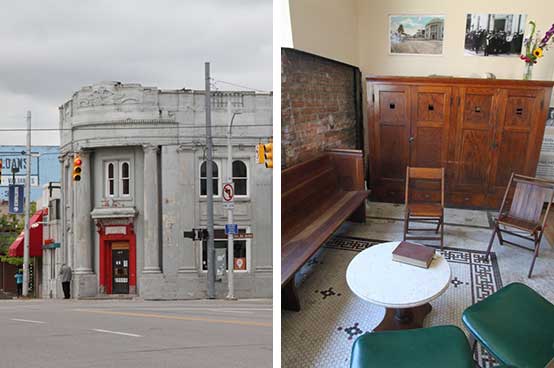
While the event was underway the fire marshal happened to drive by and noticed there were people—a few dozen actual humans—occupying a commercial building in broad daylight. In a town that has seen decades of depopulation and disinvestment, this was an odd sight. And he was worried. Do people have permission for this kind of activity? Had there been an inspection? Was a permit issued? Is everything insured? He called one of his superiors to see if he should shut things down in the name of public safety. Fortunately, the woman he called was in the meeting at the time and talked him down.
One of the side conversations included an exploration of how to activate the space without doing the kinds of things the building code required. There was already a kitchen in the back of the building from when the place had been a Chinese restaurant. But the current rules required a long list of upgrades, including a $20,000 fire-suppressing hood for the stove and new ADA-compliant bathrooms. It could all be done, but at a price point that would grossly exceed both the purchase price of the building and any conceivable cash flow the business might generate.
One workaround was to have a certified and inspected food truck park in the back alley and deliver food into the building for temporary events. ADA portable toilets could be rented as needed. The building—now called Bank Suey—has continued along these lines as a rental hall for pop-up events while the owner waits for the value of the neighborhood to increase enough to justify the required investment in physical upgrades. It’s not a bad plan, but it’s going to be awhile, folks.
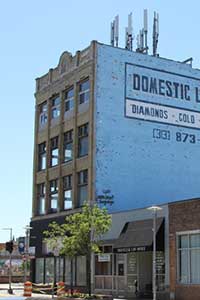 I noticed an array of cell phone antennas on the roof of a nearby building. Rent on those things generates serious revenue—far more than what these empty buildings are likely to collect from commercial or residential tenants. Too bad Bank Suey isn’t taller.
I noticed an array of cell phone antennas on the roof of a nearby building. Rent on those things generates serious revenue—far more than what these empty buildings are likely to collect from commercial or residential tenants. Too bad Bank Suey isn’t taller.
On a walking tour of town officials and development consultants pointed to empty buildings and described all the things that could be done to bring them back to productive activity: open up the blank walls and re-install windows, incubate all kinds of new businesses, paint, outdoor seating. I rolled my eyes. None of those things make any economic sense given the regulatory hurdles involved and the likely negative return on the upfront investment. I’ve seen this scenario play out many times before.
The buildings that most appeal to me are the anonymous blank inscrutable structures that could quietly contain storage facilities or a non-retail live/work space under the radar without attracting the attention of officialdom. If the inhabitants were really discrete they might be able to carry on unmolested for a number of years. Meanwhile, the usual big-money developers might buy enough of the neighboring buildings and vacant land—with the accompanying subsidies and tax breaks—to rapidly transform Main Street at a much higher economic level. There’s no in-between. You either get permanent stagnation or massive redevelopment. Baby steps are essentially illegal. “Hold, wait, and do nothing” works for the little guy.
The same officials who decry this kind of obstructionist “land-banking” that gums up the works of their revitalization dreams do exactly nothing for small-scale operators who run straight into the buzz saw of multiple opaque unresponsive bureaucracies and inspectors hungry for violations. The only tool they have to offer is loans to bring things up to code. That’s a great plan if you want to go into a huge amount of debt and declare bankruptcy in a couple of years. No thanks.
There are all sorts of things individuals can and should do at a low price point without much debt to build up their personal household economies and contribute to a better community. But this ain’t it. Mind the gap.
John Sanphillippo is an amateur architecture buff with a passionate interest in where and how we all live and occupy the landscape. He blogs at Granola Shotgun, where this post originally appeared.
Comments